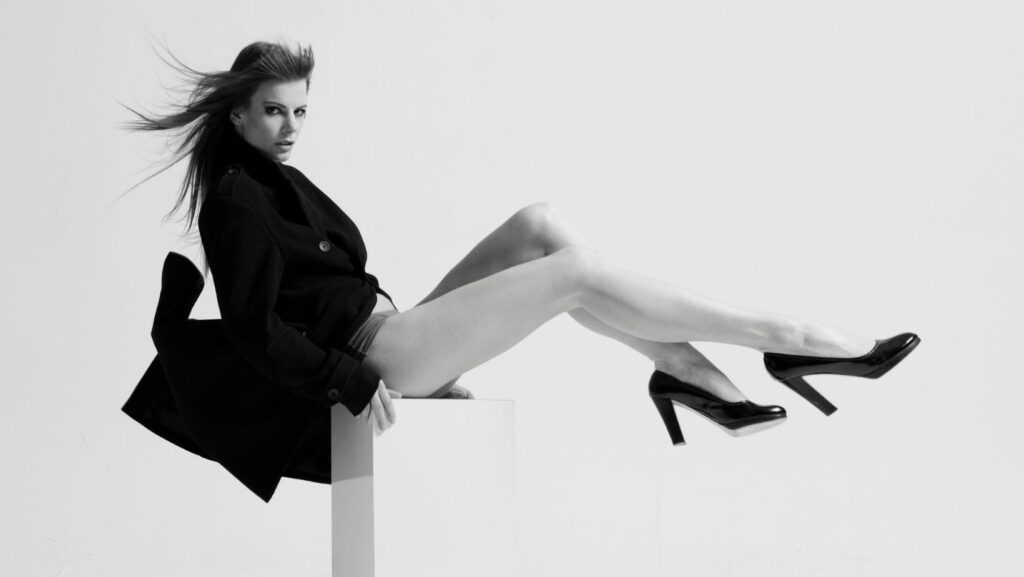Dripping in diamonds, swathed in silk, and always on the cutting edge of fashion – welcome to the world of the glamaholic. This isn’t just about a love for luxury; it’s a lifestyle, an attitude, a statement. The glamaholic doesn’t just wear clothes, they wear art. They don’t just decorate their homes, they create spaces that are a testament to their exquisite taste.
Glamaholic Lifestyle
 Embracing a glamaholic lifestyle typically implies the mindful balancing of desire and restraint. It’s an internal pursuit fueled by external aesthetics, underscoring a deeply ingrained psychological component. The pursuit of luxury, often deemed as glamaholism, doesn’t originate from pure materialism, it’s also rooted in several psychological factors.
Embracing a glamaholic lifestyle typically implies the mindful balancing of desire and restraint. It’s an internal pursuit fueled by external aesthetics, underscoring a deeply ingrained psychological component. The pursuit of luxury, often deemed as glamaholism, doesn’t originate from pure materialism, it’s also rooted in several psychological factors.
Glamaholism often serves as an outlet for identity expression. It facilitates the showcasing of personal style, thereby becoming a nonverbal communication tool. For example, a signature scent, a preferred designer brand–these elements construct a visual and sensory narrative that expresses the person’s identity, much like storytelling through fashion and luxury commodities.
Meeting Societal Standards
The glamaholic lifestyle sometimes embodies attempts to meet societal standards. A yearning for luxury can stem from societal influence, where luxury items act as symbols of success. In such contexts, these symbols don’t merely reflect economic status, they also suggest a perceived sense of achievement and self-worth.
Pursuit of Pleasure and Excellence
Indulging in luxury fashion and home décor resonates with the psychological principle of hedonism. A glamaholic individual seeks pleasure in the form of aesthetically pleasing clothing, accessories, or spaces. This behavior oftentimes aligns with perfectionism, enabling the individual to express themselves through an immaculate image.
Overcoming Insecurity
 On a deeper level, glamaholism can sometimes represent a coping mechanism. While an enticing Chanel handbag or a Louis Vuitton dress can be an expression of personal style, it can also be seen as an armor, a shield of sorts against certain insecurities. In such instances, luxury items become less about opulence for its own sake and more about self-protection through elevated status.
On a deeper level, glamaholism can sometimes represent a coping mechanism. While an enticing Chanel handbag or a Louis Vuitton dress can be an expression of personal style, it can also be seen as an armor, a shield of sorts against certain insecurities. In such instances, luxury items become less about opulence for its own sake and more about self-protection through elevated status.
Understanding the psychology behind glamaholism enriches a person’s comprehension of this extravagant lifestyle. It’s more complex than simple materialism; glamaholism is a multifaceted concept intertwining sociology, psychology, and aesthetics. A keen understanding cultivates empathy, breaking down stereotypes and offering nuanced perspectives on the glamaholic lifestyle.
Historical Context of Glamour Obsession
Glamour obsession isn’t merely a contemporary phenomenon, with its roots tracing back to the early 20th century. It shifts focus towards the glamourous personalities of the silver screen, who served as icons of desire and aspiration. They embodied opulence, personal style, and a distinctive finesse, creating a blueprint for what’s today known as the glamaholic lifestyle.
While the silhouettes and designs have evolved over time, the essential essence of glamour remains constant – exclusivity, elegance, and a certain je ne sais quoi. The Roaring Twenties, a definitive period in the history of glamour, showcased a flourishing fashion and beauty industry. Asymmetric cuts, sequins, and luxurious fabrics defined the aesthetic of the decade, showcasing a penchant for luxury that resonates with modern glamaholics.
 Glamour’s evolution took a dynamic turn during the mid-20th century, highlighting Hollywood’s influence. Stars such as Marilyn Monroe and Audrey Hepburn dominated the fashion landscape, setting the standard for beauty and style. Consequently, mass media played a crucial role during Hollywood’s Golden Age, propagating new benchmarks of glamour. It’s this wave of glamour that continues to shape the cultural standards of beauty and style today.
Glamour’s evolution took a dynamic turn during the mid-20th century, highlighting Hollywood’s influence. Stars such as Marilyn Monroe and Audrey Hepburn dominated the fashion landscape, setting the standard for beauty and style. Consequently, mass media played a crucial role during Hollywood’s Golden Age, propagating new benchmarks of glamour. It’s this wave of glamour that continues to shape the cultural standards of beauty and style today.
In recent decades, the obsession with glamour has intensified, spurred on by the rapid development of technology and social media. This new digital landscape offers a platform for self-expression and personal branding, aligning perfectly with the aspiration to cultivate an aura of glamour. Powerful illustrative entities, such as fashion influencers and high-profile celebrities, continue their reign over the glamour landscape, redefining beauty standards and fueling the glamour obsession.
Understanding the historical context of glamour obsession assists in forming a well-rounded view of the glamaholic lifestyle. It gives insights into the idiosyncrasies of this lifestyle choice, highlighting its linkages to social trends, cultural norms, and psychological motivations. The sumptuous tapestry of glamour’s history paints a vivid picture, empowering readers to understand, appreciate, and navigate the intensely captivating landscape of glamaholism.

